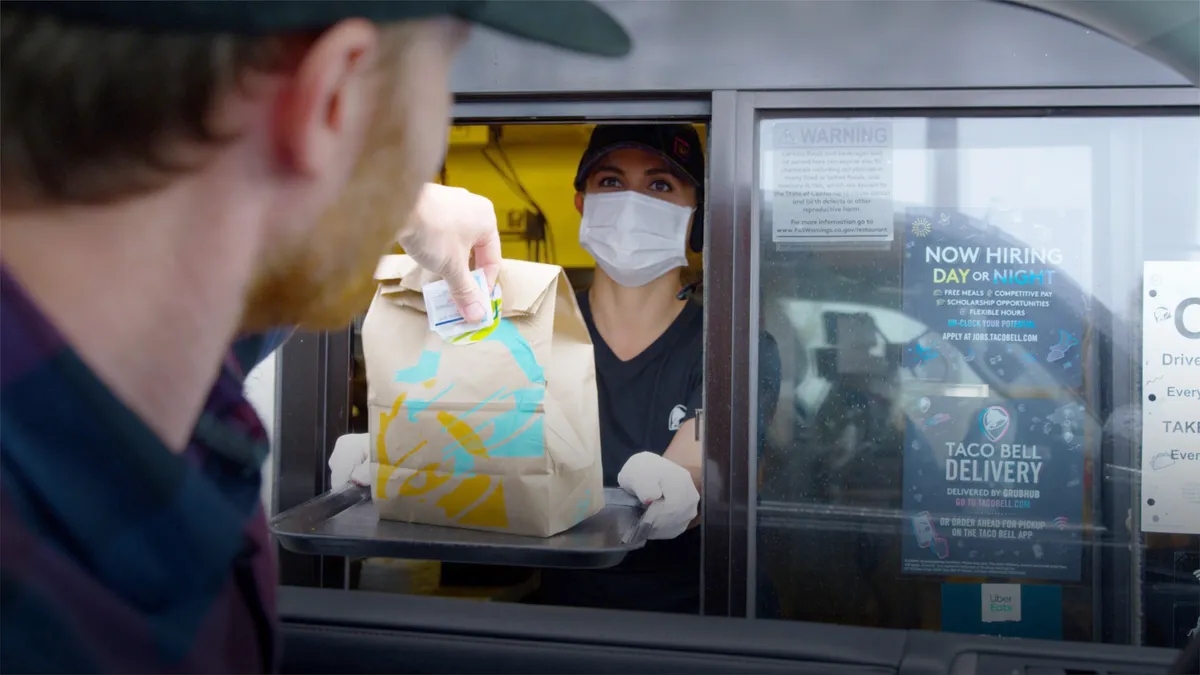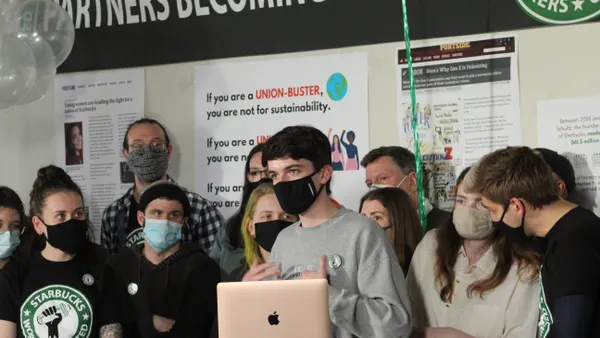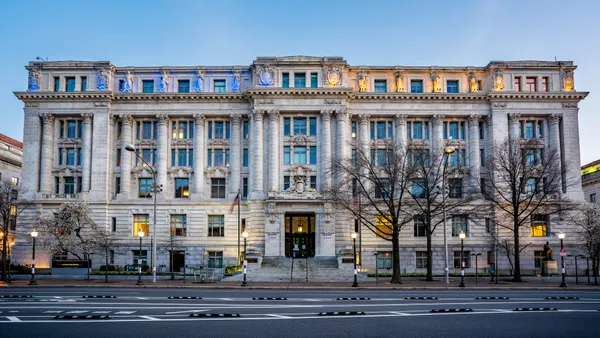Dive Brief:
- A report from UCLA and UC Berkeley finds that nearly 150,000 QSR employees in Los Angeles County, California, are at elevated risk of COVID-19 exposure. At least 59 outbreaks were reported at QSRs between July and December 2020, impacting approximately 338 workers.
- An inspection from the Los Angeles County Department of Public Health in the summer of over 2,000 restaurants found widespread noncompliance with physical distancing protocols (33%) and face coverings (44%) at QSRs.
- Since spiking again in the fall, Los Angeles County’s COVID-19 cases have declined to a testing-positivity rate of 3.5%. However, the county recently confirmed the first case of a COVID-19 variant first discovered in Brazil. The county previously recorded evidence of the U.K. variant, and cases of the variant strain increased by 50% in the past week.
Dive Insight:
As dine-in service remains closed in Los Angeles County, the QSR segment likely gained a bigger share of the market, which makes the segment's compliance with COVID-19 protocols and training even more critical.
According to the report, 44% of foodservice workers said one or more of their coworkers had contracted the virus. The virus' pervasiveness in the quick-service space is attributable to crowded kitchens at work and living conditions at home. One-third of QSRs had 20 or more employees, suggesting shared workspaces that could make it easier for the virus to spread. Because of these close quarters, cooks have had the highest increased mortality rate of any occupation during the past year, according to the report.
Many Los Angeles restaurant employers also failed to communicate viral outbreaks to their workers. Eight complaints filed with California Occupational Safety and Health Administration and the Los Angeles County Department of Public Health alleged restaurant managements' attempts to hide infections and pressure workers to work while sick. Thirty-seven percent of QSR employees reported they hadn't had mandatory training on COVID-19 protocols, per the report.
These findings also make a strong case for the push by the National Restaurant Association and other industry organizations to prioritize restaurant workers for early-phase COVID-19 vaccinations. Though restaurant workers in some parts of California have been able to get vaccinated since February, Los Angeles County expanded vaccine eligibility to foodservice workers on Monday.
California announced Thursday, however, that it will set aside 40% of all vaccine doses for people who live in its most vulnerable neighborhoods, many of which are concentrated in Los Angeles County.
A vaccinated labor force won't solve all of the industry's issues, however, if diners aren't following Los Angeles County's restrictions. A December study from One Fair Wage found that 78% of restaurant workers have experienced or witnessed hostile behavior in response to enforcing COVID-19 protocols, which has led to 58% of employees feeling reluctant to enforce such protocols.
As the UCLA/UC Berkeley report notes, growing research shows that workplaces are a common vehicle for COVID-19 community transmission and foodservice workers face particular risk. These employees are not only more likely to contract and transmit COVID-19, but also they're more likely to transmit the virus to "some of the poorest and densest neighborhoods."









